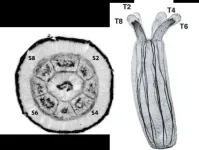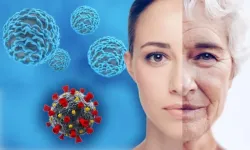(Press-News.org) You may have heard it said before that a picture is worth a thousand words, but what about an emoji?
Since emoji were first created in the 1990s, their use has evolved and increased significantly in text messaging, social media, email and more. And now, even clinicians are using them when communicating with each other at work.
“It's very interesting, the idea that a single emoji has some some kind of meaning, but could mean something different to different people,” said Colin Halverson, PhD, assistant professor of medicine at Indiana University School of Medicine.
Halverson, along with Mike Weiner, MD, MPH, Claire Donnelly, MA, and senior author Joy L. Lee, PhD, MS, recently published a study in JAMA Network Open about emoji use among hospitalists using the Diagnotes messaging app at Indiana University Health. The researchers looked through thousands of lines of messages to find anything with an emoji, then analyzed the emoji use to determine what roles they played in the messages.
“We wanted to determine whether they were just being what we call duplicative, meaning they just duplicated information that already existed, or if they actually performed a linguistic role that might be meaningful and separate from the alphanumeric text,” Halverson said. “For example, is using a thumbs up really adding new information, or just being used in a way that doesn’t add anything new, and could that be considered distracting and annoying to clinicians? Does that impact workflow in some way?”
A linguistic anthropologist, Halverson has a background in linguistics and ethics. Some of his past research work includes studying emoji and skin-tone modifiers as well as the different meanings different people associate with emoji. Halverson said while many studies about emoji exist, they are mostly focused on informatic approaches to analysis. And until now, emoji use among clinicians has never been studied empirically.
“We did not find any confusion arising from emoji use and we did not find any implications that there’s a concern about professionalism with the emoji that were used,” Halverson said. “Obviously, you can use emoji just like any other form of language in ways that are inappropriate, but it doesn’t seem like emoji are any more prone to that than words.”
For this study, 80 hospitalists were included. Halverson said future studies could look closer at generational differences in emoji use and emoji use in different clinical texting systems, in addition to expanding the number of and types of clinicians and messages analyzed.
“This article represents significant work on how clinicians communicate with each other as technology evolves, which will be more and more important to understand as time goes on,” Halverson said. “No one has done this yet in the area of health care, so there are a lot more questions to ask.”
Read the full publication in JAMA Network Open.
END
Are emoji helping your physician communicate better? What new research tells us about emoji use among hospitalists
2023-06-13
ELSE PRESS RELEASES FROM THIS DATE:
Largest global map of marine life protections released
2023-06-13
ProtectedSeas Navigator—the first global map of the world’s marine life regulations and their boundaries is now available. Navigator is a free, interactive map of over 21,000 marine protected and managed areas across 220 countries and territories and in over 25 languages.
Navigator offers a global view of marine life protections to help inform progress towards international conservation goals, including protecting 30 percent of the global ocean by 2030, which was adopted at the UN Biodiversity ...
Stowers scientists investigate the evolution of animal developmental mechanisms, show how some of Earth’s earliest animals evolved
2023-06-13
KANSAS CITY, MO—June 13, 2023—Lacking bones, brains, and even a complete gut, the body plans of simple animals like sea anemones appear to have little in common with humans and their vertebrate kin. Nevertheless, new research from Investigator Matt Gibson, Ph.D., at the Stowers Institute for Medical Research shows that appearances can be deceiving, and that a common genetic toolkit can be deployed in different ways to drive embryological development to produce very different adult body plans.
It is well established that sea anemones, corals, and their jellyfish relatives shared a common ancestor with humans that plied the Earth’s ancient oceans ...
Integrating offshore wind into China’s power grid can further carbon neutrality goals
2023-06-13
OFFSHORE WIND POWER OFFERS A PROMISING SOLUTION to the challenge of decarbonizing coastal China. China’s coastal provinces, though small in land mass, are home to 76% of the population; they are also responsible for 72% of total national power consumption and 70% of total CO2 emissions. Transitioning the coastal areas away from fossil fuels is one of China’s core challenges for achieving carbon neutrality by 2060, and offshore wind power may hold the key.
New research published in Nature Communications develops a bottom-up model to ...
First side-necked turtle ever discovered in UK
2023-06-13
The first side-necked turtle ever to be found in the UK has been discovered by an amateur fossil collector and palaeontologists at the University of Portsmouth.
The fossil remains are the earliest of a so-called side-necked pan-pleurodiran turtle, named as such because they fold their neck into their shell sideways when threatened. This does mean they can only see out with one eye.
Originally found on a National Trust beach on the Isle of Wight, the turtle fossil is an almost complete shell with cervical, dorsal and caudal vertebrae, scapulae, pelvic girdle and appendicular bones. Sadly, the skull was missing.
Lead author, Megan Jacobs, ...
Black patients with plaque build-up in arteries in the legs more likely to have a stroke, heart attack or amputation than white patients
2023-06-13
LOS ANGELES -- A new study from Keck Medicine of USC has uncovered significant racial disparities in the diagnosis, treatment and outcomes of peripheral artery disease (PAD) among Black and white patients in the United States.
PAD, which affects approximately eight to 12 million Americans and is associated with nearly half of the 150,000 yearly amputations in the U.S., is a potentially life-threatening condition in which the arteries that carry blood from the heart to the legs narrow or become blocked by the buildup of fatty plaque. This can lead to a heart attack, stroke or amputation of the affected limb.
“We discovered that Black patients are nearly 50% less ...
Estimating dementia risk using multifactorial prediction models
2023-06-13
About The Study: The findings of this study suggest that current dementia risk scores have limited clinical utility for estimation of 10-year dementia risk. Further research is needed to develop more accurate algorithms for estimation of dementia risk.
Authors: Mika Kivimäki, Ph.D. of University College London, is the corresponding author.
To access the embargoed study: Visit our For The Media website at this link https://media.jamanetwork.com/
(doi: 10.1001/jamanetworkopen.2023.18132)
Editor’s Note: Please see the article for ...
Content analysis of emoji and emoticon use in clinical texting systems
2023-06-13
About The Study: This study found that when clinicians use emoji and emoticons in secure clinical texting systems, these symbols function primarily to convey new and interactionally salient information. These results suggest that concerns about the professionalism of emoji and emoticon use may be unwarranted.
Authors: Colin M. E. Halverson, Ph.D., of the Indiana University School of Medicine in Indianapolis, is the corresponding author.
To access the embargoed study: Visit our For The Media website at this link https://media.jamanetwork.com/
(doi: 10.1001/jamanetworkopen.2023.18140)
Editor’s Note: Please ...
People who preserve ‘immune resilience’ live longer, resist infections
2023-06-13
Embargoed by Nature Communications until 10 a.m. Central Time on Tuesday, June 13
SAN ANTONIO (June 13, 2023) — Researchers from The University of Texas Health Science Center at San Antonio, working with collaborators in five countries, today revealed that the capacity to resist or recover from infections and other sources of inflammatory stress — called “immune resilience” — differs widely among individuals. The researchers developed a unique set of metrics to quantify the level ...
Improving potential stem cell-based treatments for patients with Type 1 Diabetes
2023-06-13
Following encouraging results from pre-clinical research and a recent clinical trial on stem cell-based treatments for patients with Type 1 diabetes, researchers are now working on maximizing the function and potential of stem cell-based treatments for future application in patients.
More than 8 billion people worldwide live with Type 1 diabetes (T1D) according to recent estimates. In T1D, the so-called beta cells in the pancreas do not make enough of the hormone insulin due to the destruction of beta-cells by the immune system leading to blood sugar levels rising above normal levels. Over time, T1D can lead to severe organ damage. There is no cure ...
Lung and heart stem cell research paves way for new COVID-19 treatments
2023-06-13
Researchers have used heart and lung stem cells infected with the virus that causes COVID-19 to better understand how the disease impacts different organs, paving the way for more targeted treatments.
The research, co-led by Murdoch Children’s Research Institute and the Peter Doherty Institute for Infection and Immunity (Doherty Institute), found the responses to SARS-CoV-2 varied significantly depending on the cell type, allowing the team to identify effective anti-viral drugs to treat infection in heart and lung cells. The findings were published in the 10th anniversary edition of Stem Cell Reports.
Murdoch ...




